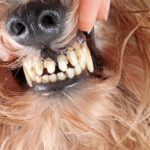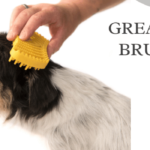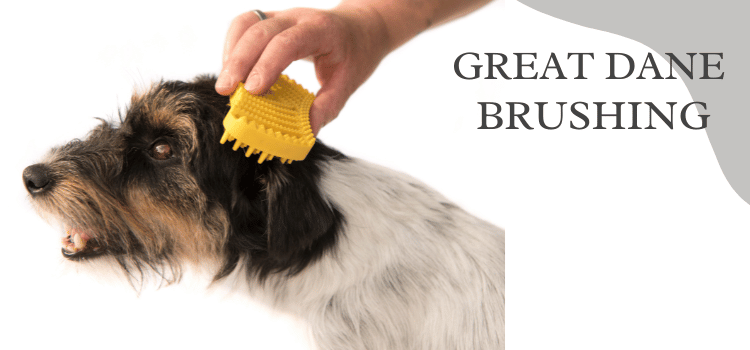Table of Contents
ToggleWhat is a Miniature Great Dane?
Mini Great Danes aren’t an officially recognized breed; however, they may be the consequence of the breeding of smaller Great Danes or genetic dwarfism mutations. Because the Great Dane is an unofficial breed, “mini” refers to any Great Dane that is smaller than the specific breed. They are also known as “pocket,” “dwarf,” or “teacup” Great Danes.
To be termed a “mini” Great Dane, each individual dog needs simply to be smaller than the breed standard. Miniature Great Danes are not formally acknowledged. Due to their genetic defect, They are unfortunately at risk for a variety of health issues as well as a shorter life expectancy.
Mini Great Dane Diet
The nutritional requirements of a “Mini” Great Dane are the same as those of a full-sized Great Dane since, despite their size, they are still a big breed dog.
To guarantee a healthy growth rate, a little Great Dane should be fed a high-quality diet designed for large size dogs.
Miniature Great Dane Appearance
The size for Adult females must be 28 inches tall, while males must be 30 inches tall. As a result, if you have a Great Dane that is just 25 inches tall, you have a little Great Dane!
As you can see, the term miniature in the context of a Great Dane is somewhat misleading. Because Great Dane are a massive breed, even little Great Dane will be larger than most dogs! As previously stated, there are only two methods for a purebred tiny Great Dane to exist.
Smaller Great Dane were bred one or more times to create an even “smaller” variant of the standard Great Dane. Dwarfism genes were passed down from parents or can emerge from genetic alterations.
Miniature Great Dane Caused by Genetic Mutations
DNA defines everything about a creature. DNA, when combined, forms genes. Genes determine the height, coat color, etc.
Alterations in gene expression can occur as a result of errors or unexpected modifications to DNA during replication or other biological processes. Small changes can make a dog drool more than its parents.
In rare circumstances, parents pass on genes to kids before development. In certain circumstances, mutations affect the animal immediately.
Most animals have dozens of mutations that don’t harm them. Depending on where a mutation occurs in the gene, it could be quite harmful.
Mutations can cause dwarfism in tiny Great Danes. This prevents their bones from growing normally, resulting in a smaller-than-average dog.
Although rare in Great Danes, it can happen. Boston Terriers, Pugs, Beagles, and Dachshunds often have achondroplasia.
Mini Great Dane Health Issues
Miniature Great Dane present a variety of special considerations, the most important of which is arguably their higher susceptibility to serious health problems.
If you do wind up acquiring one, make sure to stay on top of health scans, veterinary visits, and other sorts of preventative treatment.
You should also think about getting pet health insurance, as it is quite probable that you may experience higher medical expenses at some point. Moreover, You might not have to pay the full amount of very high fees this way, instead having the insurance company chip in.
1. Hip dysplasia
Hip dysplasia is more prevalent in large dog breeds like Great Dane. Having a deformed ball and socket joint is a persistent cause of arthritis.
It can be present at birth in a small percentage of puppies, or it can manifest itself later in life. Hip dysplasia manifests itself in stiff hind legs, trouble getting up, and lameness.
Choose parents that have been checked out for health to lessen the likelihood of problems with your little Great Dane.
Problems associated with miniaturization
Dogs who are extremely little almost always have health issues. These conditions include hypoglycemia, abnormalities of the heart, a lack of calcium, and hepatic shunts.
Unhealthy parents will always generate unhealthy offspring. Sadly, unethical and profit-driven breeders will neglect these concerns in order to maximize their profits.
They will go through with it even if they believe they can sell the puppies for a significant sum of money. There are a lot of health problems that come along with having dwarfism.
Also, the Great Dane needs to be crossed with a breed that already possesses this gene.
Mini Great Dane Life Expectancy
Every breed is predisposed to the development of particular hereditary diseases. The cute Great Dane has more than his fair share of potential problems, though. The Great Dane has a relatively short life expectancy, ranging from between 7 to 10 years.
It’s possible that a Great Dane Miniature has a lesser risk of developing some problems that are more common in the big breed. Due to the fact that they were just made, however, it is impossible to know at this point.
When breeders prioritize tiny size over health, there is a greater chance that inherited diseases will not be looked for or examined throughout the breeding process. These are some of the possibilities for the Great Dane.

Mini Great Dane Mixed Breeding
Although the following possibilities described how a “small” purebred Great Dane can occur, there is another possibility. Breed mingling!
Mixed breeds have grown in popularity in the last decade, thanks to the success of hybrids like Labradoodles, Goldendoodles, Cockapoos, Malipoos, and many others.
small Great Dane developed through selective breeding. However, it appears impracticable to deliberately seek them out.
It’s quite acceptable to rescue a mixed Great Dane from a shelter. However, if you prefer a smaller breed, a full or partly Great Dane seems unneeded.
One can begin with a type that is currently younger and has recognized features or characteristics that you like.
Mini Great Dane Temperament
Mini Great Dane has a similar temperament to their parent breed. These are exceedingly loving, which is why they are also known as ‘Gentle Giants.’ This name perfectly describes the dog’s attitude.
Given the breed’s appealing temperament, the pups are also friendly. They are benign, have a tender heart, are approachable, and are pleasant.
Caring for a Mini Great Dane
It is illegal to purposely create a Great Dane with dwarfism, but how can you afford to care for one if you buy one or already have one?
Looking for a Great Dane necessitates a significant amount of extra time and effort. Not even to mention the extra costs associated with the health issues they are likely to confront.
Looking for a miniature Great Dane will be difficult as well! Based on the dog, dealing with health difficulties and maintaining their existing compromised immune system will necessitate extra attention for at least until adulthood.
There’s many numerous indicators to look for in dogs with dwarfism. such as inappropriate body proportion, Teeth problem, Weight Issues, Bulging eyes.
Miniature Great Dane Puppies for Sale
To make this youngster more attractive, some breeders will label it a teacup or Miniature Great Dane. However, this is also deceptive. Even though the puppy is little, it is not a genuine teacup. However, many breeders use the terms “teacup” or “miniature” to characterize the size of the puppy or adult dog.
Always take extreme caution while purchasing a small puppy or adult dog. Some breeders will call a sickly brat as a Mini Great Dane and charge a hefty price for it! As a result, make sure to purchase from a reputable breeder.
You should also ensure that the Mini Great Dane for sale and its parents are kept in a safe and healthy environment. Request to see the mom and, if possible, the dad. Purebred puppies are really proud of their puppies and will provide a documented health guarantee.
You may also like to read
American vs European Great Dane















